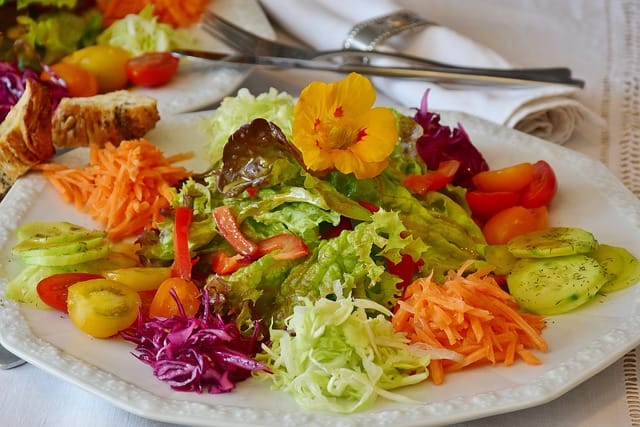Fighting gardening diseases: Cabbage yellows
Gardening can be a rewarding and enjoyable activity, but it is not without challenges

In this article:
- Introduction
- Understanding Cabbage Yellows
- Symptoms and Identification
- Causes and Transmission
- Prevention and Control Measures
- Crop Rotation and Companion Planting
- Soil Management and Fertilization
- Proper Watering Techniques
- Disease-Resistant Varieties
- Chemical and Organic Treatments
- Integrated Pest Management Strategies
- Harvesting and Disposal of Infected Plants
- Conclusion
Introduction
Gardening can be a rewarding and enjoyable activity, but it is not without challenges. One of the most common obstacles gardeners face is the occurrence of plant diseases. In this article, we will focus on one particular disease that affects cabbage plants - Cabbage Yellows. Understanding the symptoms, causes, and control measures can help you maintain a healthy cabbage crop and prevent the spread of this disease.
Understanding Cabbage Yellows
Cabbage Yellows, also known as Fusarium yellows, is a soilborne disease caused by the fungus Fusarium oxysporum f. sp. conglutinans. It primarily affects cabbage and other brassica crops, such as broccoli, cauliflower, and kale. The fungus invades the vascular system of the plants, disrupting nutrient uptake and causing yellowing of the leaves.
Symptoms and Identification
Early symptoms of Cabbage Yellows include yellowing and wilting of lower leaves. As the disease progresses, the yellowing spreads to upper leaves, and the plants become stunted. The veins in the leaves may turn purple, and eventually, the whole plant may collapse. It is crucial to identify these symptoms early to take necessary action and prevent further spread.
Causes and Transmission
Cabbage Yellows is caused by the soilborne fungus Fusarium oxysporum f. sp. conglutinans. The fungus can survive for several years in the soil and can be introduced through infected seeds, transplants, or plant debris. It can also be spread by contaminated tools, equipment, and even insects. The disease is more likely to occur in warm and humid conditions.
Prevention and Control Measures
Prevention is always better than cure when it comes to plant diseases. Here are some preventive measures you can take to control Cabbage Yellows:
- Start with disease-free seeds or transplants from reputable sources.
- Practice good sanitation by cleaning tools and equipment regularly.
- Remove and destroy infected plant debris to prevent fungal spores from spreading.
- Monitor plants regularly for early signs of disease.
- Rotate cabbage crops and avoid planting them in the same location for at least three years.
Crop Rotation and Companion Planting
Crop rotation is an effective technique to reduce the incidence of Cabbage Yellows. Avoid planting cabbage or other brassicas in the same spot for multiple years, as this allows the fungus to build up in the soil. Instead, rotate with non-brassica crops like legumes or root vegetables, which are less susceptible to this disease. Companion planting with plants that naturally repel pests and diseases, such as marigolds, can also be beneficial.
Soil Management and Fertilization
Healthy soil is the foundation for healthy plants. To prevent Cabbage Yellows, ensure that your soil is well-drained, as excess moisture can favor the growth of the fungus. Improve soil fertility and structure by adding organic matter, such as compost or well-rotted manure. Testing your soil and providing appropriate fertilization according to the nutrient needs of cabbage plants can also help to strengthen their resistance against diseases.
Proper Watering Techniques
Proper watering is essential for maintaining plant health and preventing diseases. Avoid overwatering, as it creates a favorable environment for fungal growth. Instead, water the plants deeply but less frequently, allowing the soil to dry out slightly between waterings. Use drip irrigation or soaker hoses to provide water directly to the roots without wetting the foliage, minimizing the spread of fungal spores.
Disease-Resistant Varieties
Selecting disease-resistant varieties is an effective strategy for preventing Cabbage Yellows. Check with local nurseries or seed catalogs for cabbage varieties that are specifically bred for resistance to Fusarium oxysporum. These varieties have built-in genetic defenses against the fungus and are less likely to be affected by the disease.
Chemical and Organic Treatments
In severe cases, chemical or organic treatments can be used to control Cabbage Yellows. Fungicides containing active ingredients like thiophanate-methyl and cyprodinil can help suppress fungal growth. Organic options include biofungicides containing beneficial microorganisms that compete with the pathogen. It is important to read and follow the instructions provided by the manufacturer when using these treatments.
Integrated Pest Management Strategies
Adopting Integrated Pest Management (IPM) strategies can effectively control and prevent Cabbage Yellows. IPM focuses on using a combination of cultural, biological, and chemical control methods to manage pests and diseases while minimizing the environmental impact. This approach involves regular monitoring, implementing preventive measures, and using control strategies only when necessary.
Harvesting and Disposal of Infected Plants
If some of your cabbage plants become infected with Cabbage Yellows, it is important to remove and dispose of them properly to prevent the disease from spreading. Harvest infected plants as soon as possible, ensuring not to shake off or spread any fungal spores. Bag and seal the infected plants before disposing of them in the trash or burning them if allowed in your area.
Conclusion
Cabbage Yellows can be a significant problem for cabbage growers, but with proper prevention and control measures, it can be managed effectively. By understanding the disease, its symptoms, and its causes, as well as implementing good gardening practices, you can maintain a healthy cabbage crop and enjoy a bountiful harvest. Stay vigilant, practice good garden hygiene, and proactively protect your plants to minimize the risk of Cabbage Yellows and other plant diseases.
